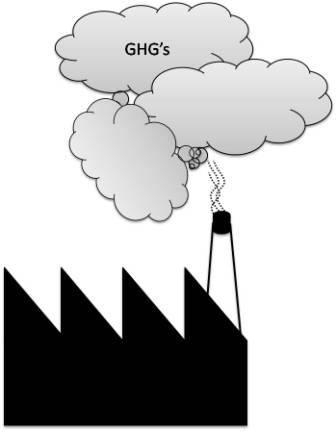Carbon Management at Iron and Steel Sector –Benefits
 As discussed earlier, the Iron and Steel sector is GHG emission intensive. The main GHG emission processes associated with iron and steel production are coke making, sinter plant, palletization plant, blast furnaces and power generation. Mostly coal is the main source of energy and hence contributes to the major portion of total GHG emissions. Other sources that are not mentioned here and that may contribute significantly to a facility’s overall emissions include the on-site transportation of materials and the consumption of purchased electricity, heat and steam.
As discussed earlier, the Iron and Steel sector is GHG emission intensive. The main GHG emission processes associated with iron and steel production are coke making, sinter plant, palletization plant, blast furnaces and power generation. Mostly coal is the main source of energy and hence contributes to the major portion of total GHG emissions. Other sources that are not mentioned here and that may contribute significantly to a facility’s overall emissions include the on-site transportation of materials and the consumption of purchased electricity, heat and steam.
Benefits of Carbon accounting for iron and steel sector
GHG accounting and management system provides industry with a set of tools to develop programs aimed at reducing GHG emissions. The key benefits of carbon accounting and management are – cost saving through energy efficiency, fulfilling stakeholder’s expectations such as compliance with government regulations ensures continuous business operations and branding such as green rating at BSE CARBONEX (a carbon indexing project) and Carbon Disclosure Project (CDP).
Benefits achieved by companies in iron and steel sector
Steel Authority of India Limited (SAIL)
- As a part of GHG emission reduction activities, SAIL has achieved energy savings in its operations. SAIL has recorded energy consumption at 6.74 giga calories per tonne of crude steel (tcs) in year 2008-09 which is around 3% less over the previous year. This in turn has contributed to GHG emission reduction.
- Water Consumption reduced to 3.95 m3/tcs. Therefore there was a significant reduction in electricity required for water pumping and hence contributed in GHG emission reduction.
- Jatropha plantation has been done at Bhilai Steel Plant to produce biodiesel. It has been used in plant vehicles to reduce GHG emission resulting from the transportation.
TATA Steel
- As part of GHG emission reduction activities, TATA steel has implemented various energy efficiency initiatives. Energy efficiency measures contributed in GHG emission reduction as well as cost reduction. Specific energy consumption dropped in 2009-10 to touch 6.125 giga calories/tcs
- Improvements in byproduct fuel recovery and usage, along with waste heat recovery have resulted in a reducing trend in energy consumption and reduced GHG emission. In 2009-10, GHG emission was 2.42 t/tcs compared to 2.39 t/tcs in the previous financial year.
- TATA steel discloses its emission related information to Carbon Disclosure Project (CDP)-a not for profit organization. CDP introduced the Carbon Disclosure Leadership Index (CDLI) to rank the organization in terms of the ‘quality of its disclosure’ response to the CDP information request. CDLI also shows the company’s contribution to action on climate change mitigation and adaptation. TATA steel ranked at 10th position with 73 score out of 100. This is a considerable recognition by CDP to TATA steel.
Most energy intensive operations can become energy efficient and save precious national resources. In addition to the above mentioned companies, there are many other companies who are doing a really good job in resource management and in turn reducing their GHG emission. Measuring their GHG emissions not only allows them to manage their resources efficiently, but also helps them to prepare for current and future regulatory compliance and continuous business operations.


